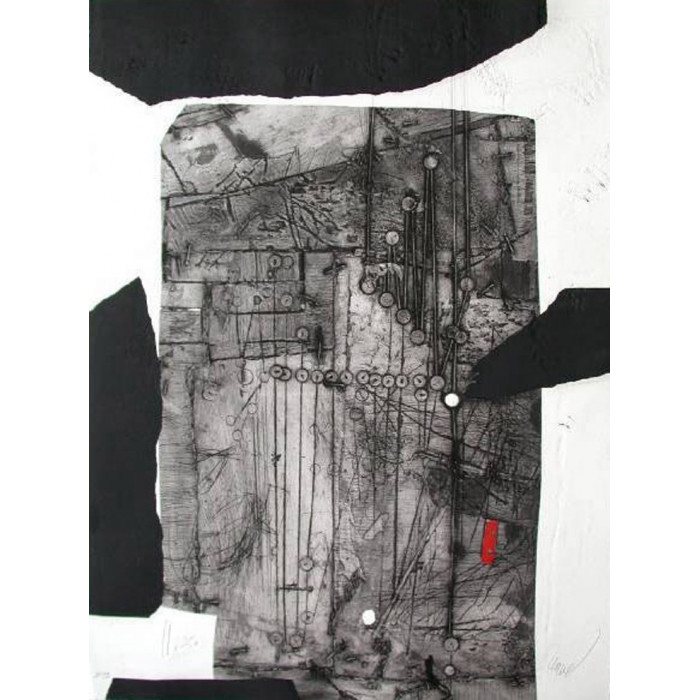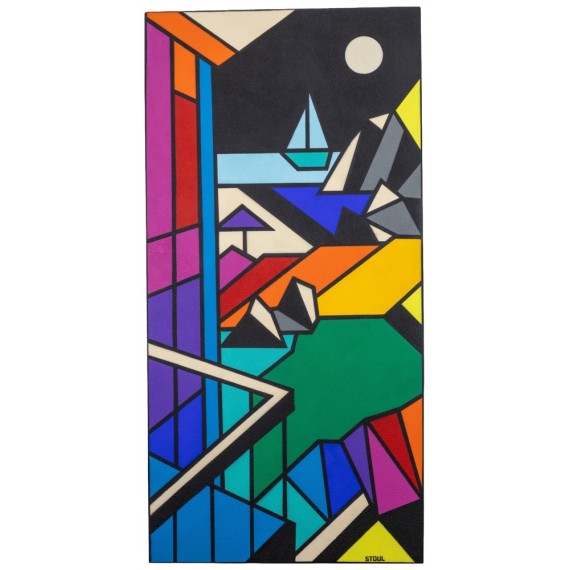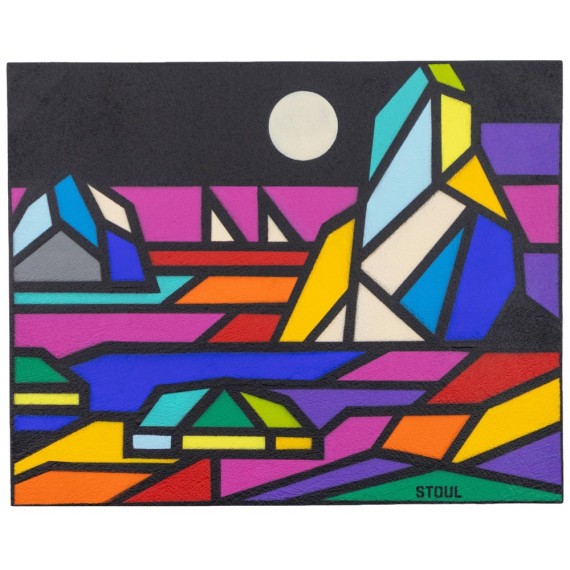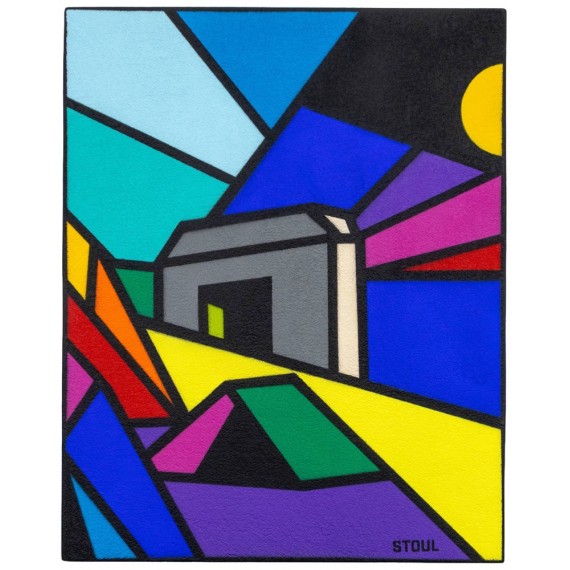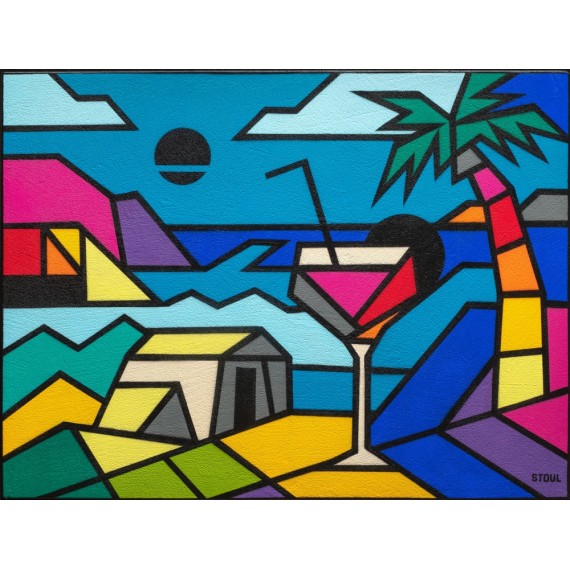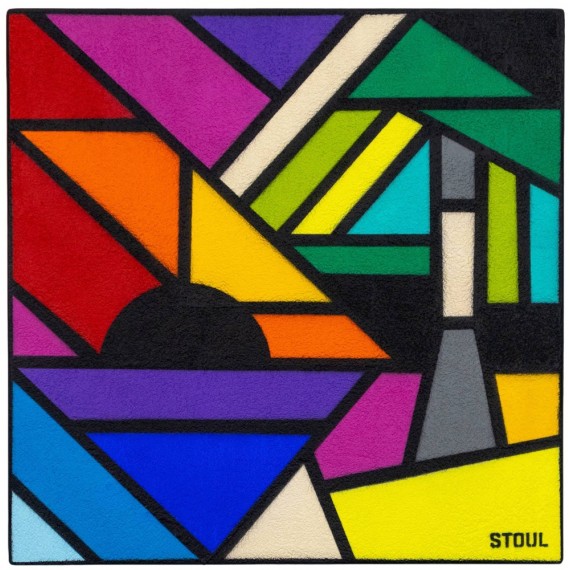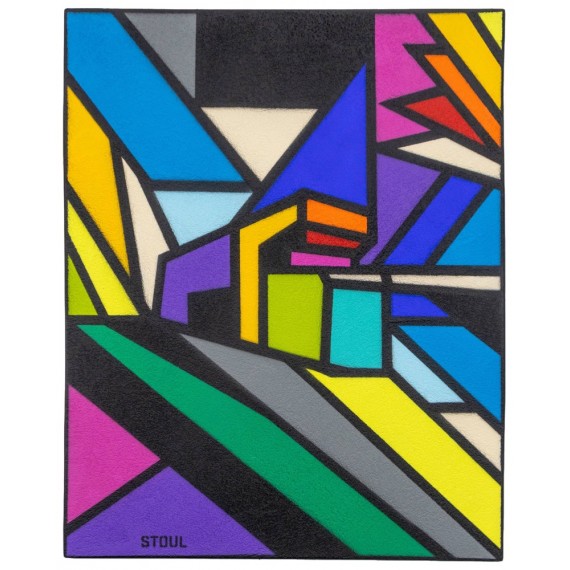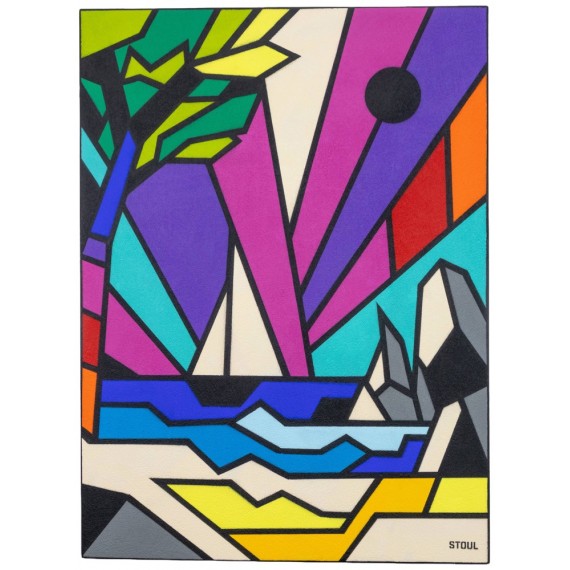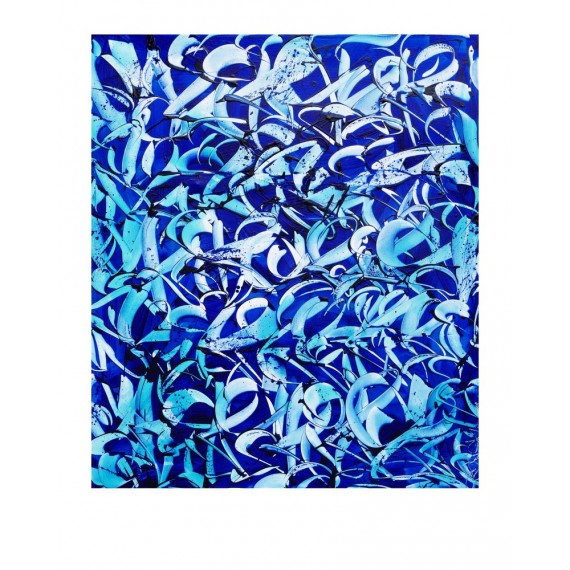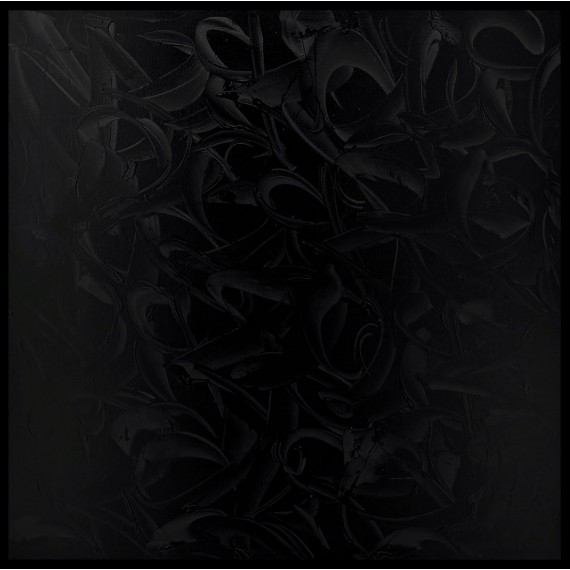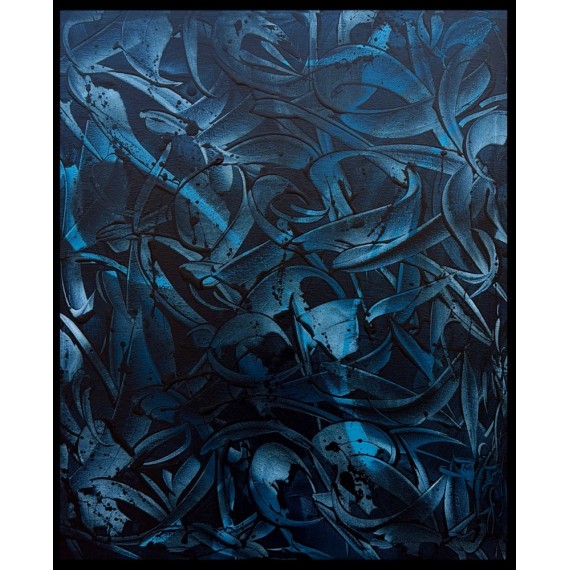Antoni CLAVÉ
1913-2005
Carborundum engraving
Handsigned and numbered in pencil
Paper size: 76x57 cm
99 proofs + Artist proofs.
It is an artist's proof.
Year: 1998
Antoni Clavé
Antoni Clavé was born in Barcelona in 1913. At the age of 13, he had to work and was hired as a clerk in a house of fabric for sheaths and corsets. It is part of the evening course of the Escuela de Artes y Officios Artisticos y Bellas Artes de Barcelona.
Having become an apprentice house painter, he was attracted by the manual side of the trade (whitewashes, plasters, glues, and later color preparation). The young Clavé learns to handle the brushes, to draw, the letter, the faux wood. In 1932, a second Prize in a poster competition, decided to give up his place as a house painter. Clavé was hired by the company Cinaes (Cinematografica Nacional Española) to produce posters for films on the facades of three Barcelona cinemas. Clavé lives from advertising and decorative works in which he uses avant-garde experiments: collages of various materials, ropes, printed fabrics, corrugated cardboard, newsprint.
In 1936, the Spanish War broke out. Its mission is to produce posters intended to galvanize the combatants. On January 26, 1939, Barcelona fell into the hands of the Francoist army. The Catalan population fled the bombardments and crossed the French border. Antoni Clavé arrives in France on January 29. He exhibited in Perpignan drawings executed at the internment camp for refugees, gouaches and some portraits in graphite.
Clavé arrives in Paris without identity papers and with the few francs that the Perpignan exhibition brought him. He made his living from illustration work by drawing comics for the periodicals Gavroche, Aventure then Jumbo. He met Picasso through Spanish painters who were also exiled to Paris.
In June 1940, the Germans were at the gates of Paris. Clavé plans to leave for Venezuela, but the German armor blocks the road and forces him to turn back.
After the Occupation, Antoni Clavé participated in a series of group exhibitions in Paris, in the provinces and abroad. They do not yet allow him to live on his painting. He began to produce important sets and costumes for ballets. He also illustrates several books.
Recognition came in 1955 (he was 42 years old) from the monographic exhibition in London offered by the Arthus Tooth & Sons gallery. Antoni Clavé receives the Unesco Prize for engraving at the XXVIII Biennale in Venice in 1956 and the Sala Gaspar in Barcelona exhibits his paintings for the first time. The following year, he created his first paintings on carpet. This is followed by an exhibition at the Beyeler Gallery in Basel. The same year he also exhibited at the Museo de bellas artes in Bilbao and at the Stephen Silagy Gallery in Los Angeles. He represented France at the 4th Sao Paulo Biennale where he received the Matarazzo painting prize with Ben Nicholson for Great Britain and Giorgio Morandi for Italy.
Galerie Creuzevault organized its first major exhibition in Paris in 1958. Clavé receives the Kamakura Prize at the Tokyo Print Biennial while the Arthus Tooth & Sons gallery in London exhibits it again. Etc. It connects exhibitions in galleries and in museums around the world. While its creation continues to evolve. He invents the crumpled papers in trompe l'oeil. He participated for the first time in FIAC in 1982 with the Sala Gaspar gallery.
In 1990, the monumental sculpture (14 meters high) commissioned by the municipality of Barcelona to commemorate the 1888 Universal Exhibition was installed in the Citadel Park of Barcelona. Then, participation in Art Basel. Since then, posthumous exhibitions have been held regularly around the world.
Source: his official biography

